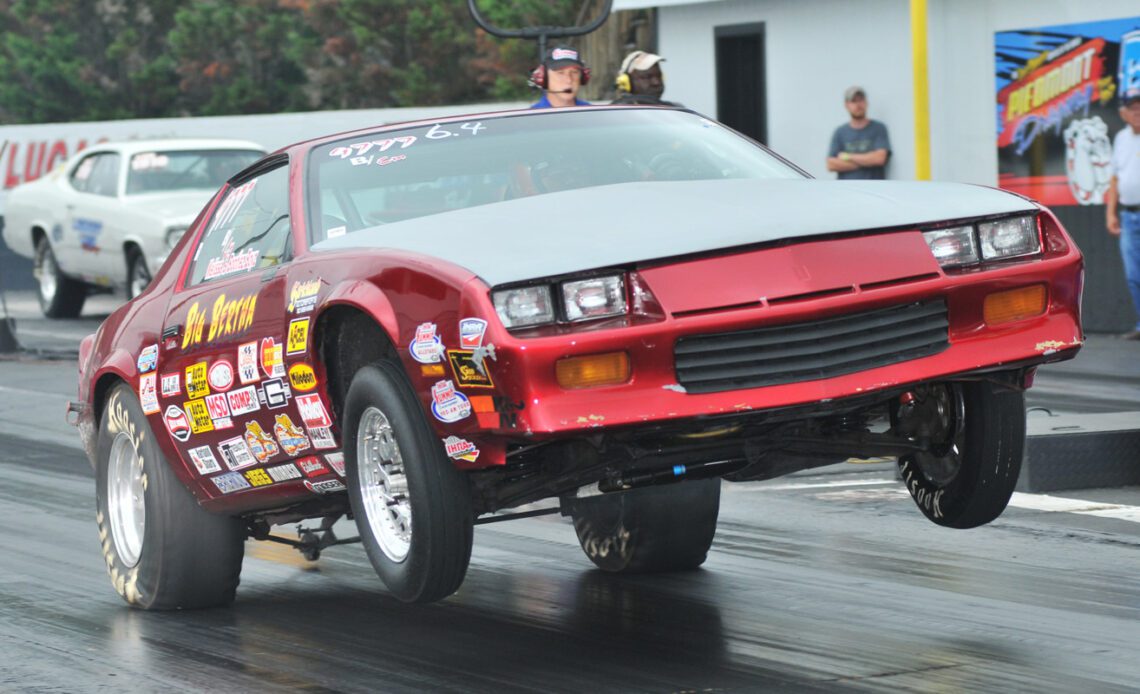When you hammer the loud pedal and all hell breaks loose on the dragstrip starting line (it’s what we live for), having the suspension and steering aligned together keeps you pointed straight. Which is what you want it to do. Having the basics of caster, camber, toe-in, and bump steer only “close enough” can be magnified very quickly, then work against you when manhandling your horsepower down the track.
Rick Jones from RJ Race Cars and Quarter-Max Chassis, and Dave Zimmerman from Team Z Motorsports, provided their expertise in pointing us in the right direction (pun intended).
Your front-end alignment is one of your final and most critical steps to allow raw acceleration to be easily controlled at the steering wheel. Following proper squaring of your overall chassis and rear differential, you can now focus on your front suspension and steering alignment.
We just completed squaring our chassis and rearend. With that, we settled the car on the ground and ensured the front of the chassis was level with the floor.
Zimmerman jumped right in on the subject by explaining his process of establishing a true centerline on the chassis they build. He says, “We always scribe a center line completely down the car at every crossmember; then, we can always refer to different points along the underside of the car to measure back from center.”
Jones refers to a book he publishes and sells entitled Rick Jones Chassis Tuning Guide. He offers a complete chapter on front-end alignment where he explains the mechanics of adjusting your front end, and describes exactly how they affect your steering.
There is no real black magic to squaring your car and properly aligning yourself for the dragstrip. Having an understanding of those “big four” adjustment terms — camber, caster, toe-in, and bump-steer — is half the battle. – Rick Jones, RJ Race Cars
Basic Definitions
Caster
The caster is the angle of the steering axis. Suppose you draw an imaginary line between the upper and lower ball joints. In that case, positive caster is when that line tilts backward, away from the direction of forward motion. Zero caster is when the steering axis is straight up and down, and negative caster is when the axis leans forward.
“With our full-tube racing chassis, 10 degrees of positive caster is our preferred layout. With many stock-type front suspensions, you might have a hard time getting 5 degrees, but try to get as much as possible,” says Jones.
Click Here to Read the Full Original Article at DragzineDragzine…


